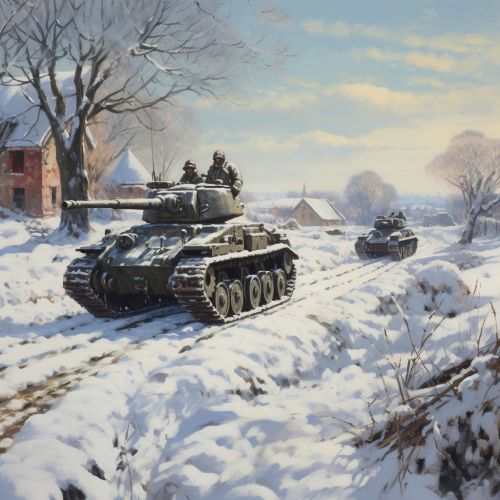Vistula–Oder Offensive
Background
The Vistula–Oder Offensive was a major offensive launched by the Red Army during the final stages of World War II. This offensive was aimed at liberating Poland and pushing the Wehrmacht out of Eastern Europe. The offensive was named after the two rivers around which the main battles were fought: the Vistula River and the Oder River.


Planning and Preparation
The planning for the offensive began in the fall of 1944, following the successful conclusion of the Belorussian Strategic Offensive Operation, also known as Operation Bagration. The Soviet high command, the Stavka, under the leadership of Joseph Stalin, decided to exploit the weakened state of the German forces and push for a decisive victory. The plan involved a two-pronged attack: the 1st Belorussian Front, commanded by Marshal Georgy Zhukov, would advance from the Vistula River towards Berlin, while the 1st Ukrainian Front, under Marshal Ivan Konev, would push from the south towards the Oder River.
The Offensive
The offensive began on January 12, 1945, with a massive artillery barrage followed by a ground assault. The Red Army made rapid progress, thanks to the weakened state of the German forces and the effective use of combined arms tactics. By January 31, the Red Army had reached the Oder River, less than 70 kilometers from Berlin.
Aftermath
The Vistula-Oder Offensive resulted in a significant shift in the balance of power in Eastern Europe. The Red Army had advanced over 500 kilometers and liberated much of Poland. The offensive also paved the way for the final assault on Berlin, which would begin in April 1945.
